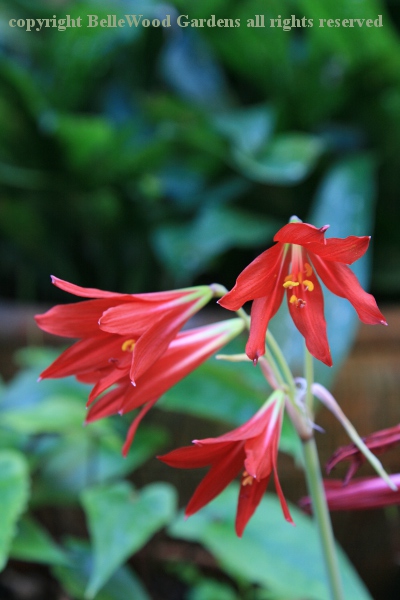
.
If you have any comments, observations, or questions about what you read here, remember you can always Contact Me
All content included on this site such as text, graphics and images is protected by U.S and international copyright law.
The compilation of all content on this site is the exclusive property of the site copyright holder.
Repotting Rhodophiala
Wednesday, 12 September 2018
It's September. Costco has the first artificial christmas trees out on display. And for several weeks there have been bags of bulbs - tulips, daffodils, hyacinths, crocus, and more. Even though these bulbs are fall planted to flower next spring it is too early. The ground is too warm for their proper rooting, then winter resting behavior. Yes, yes, I know someone will shoot up a hand and ask, "But what about all the ones that are already in the ground because they were planted a year (or more) ago - what about them!?" They were planted and now have a natural cycle while the bulbs dug in The Netherlands, dried and cured and shipped overseas, they need to dive back underground but only once the soil has begun to cool.

There are some bulbs, though, that think right now is a good time to grow and flower. One of my very favorites is the oxblood lily, also known as schoolhouse lily or hurricane lily, Rhodophiala bifida. I have the dark red "oxblood lily" form grown in Texas. Hysteranthous, it flowers in autumn before any leaves appear. It does not set seed but freely makes offsets. The color form of this variant is found in a population of the Province of Entre Rios, Argentina. In the wild it is exposed to long, hot summer conditions while dormant, but does receive some summer rain.
Since oxblood lily is only hardy to Zone 7, I must grow mine in the greenhouse. They certainly receive the summer baking they are said to need, and infrequently I splash some water on the pots.
Watering the pots does not seem to trigger a flowering response. In fact, this year I tried to coax some into bloom for a garden club flower show on 22 August, with a spectacular lack of success. Instead, one pot flowered two days later, after the show.

And this pot decided to leap into bloom all on its own.
One interesting thing about rhodophiala in the wild is how deeply they can tug themselves down into the ground, as much as 3 feet. Which is an impressive descent for small bulbs powered by contractile roots. Thus, in pot cultivation what's really appreciated are "long tom" pots. If I lived in the UK it would be easy to find them, rather deep in proportion to their width.
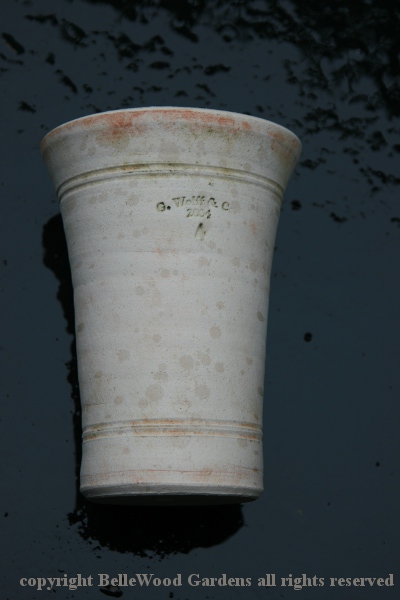
I do have one Guy Wolff pot, but there's no way I can buy as many as needed for my offsetting bulbs. As an aside, data on a faded label suggests my first rhodophiala came from Edith Eddlemann in 1989. As well as generous offsets from mature bulbs I have acquired other bulbs, both as gifts and purchased.
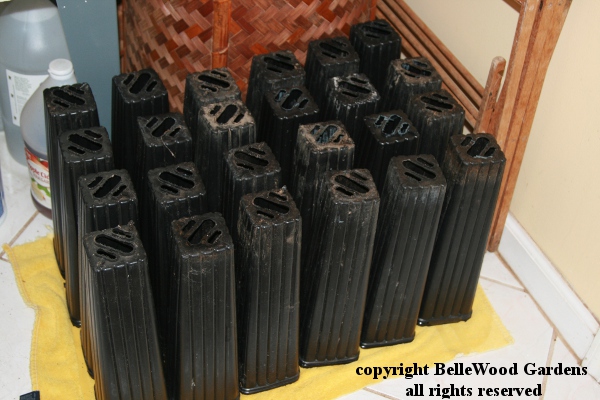
There is, however, an option. My friend Hilary Clayton shared these plastic
(previously used) tree pots with me. Deep enough that the rhodophiala can
descend for a while before eventually reaching the bottom. And they will.
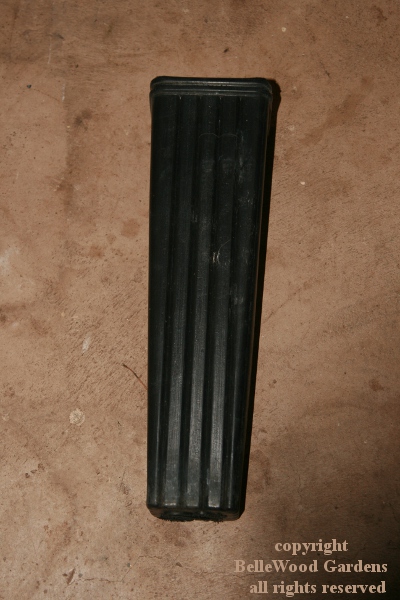
Each pot is 4 inches wide at the top, 13.5 inches tall, and hold 2 1/2 quarts of potting mix. Needless to say, they easily tip over. I have a small slatted plastic bin that holds six pots, nicely stabilizing them.

I prepared a potting mix made up of top soil, somewhat coarse all purpose sand, and small gravel that I shovel out of the seasonal brook, in 2:1:1 proportions.
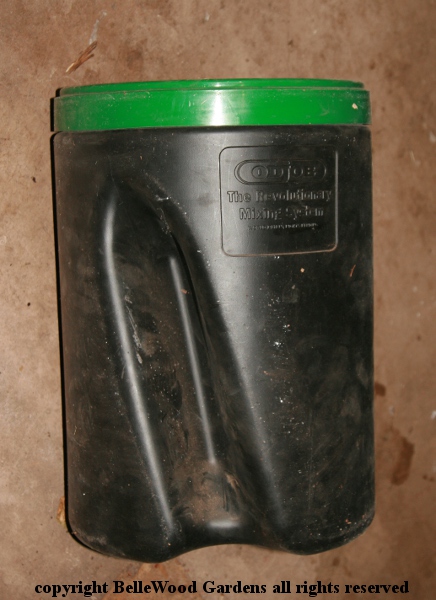
It is mixed in this Odd Job. Intended, I think, for small amounts of concrete but quite suitable for potting mixes. Shovel in the components, tighten the lid, lay on the garage floor, and roll back and forth until mixed. Works very well - as long as I only fill it part-way up.
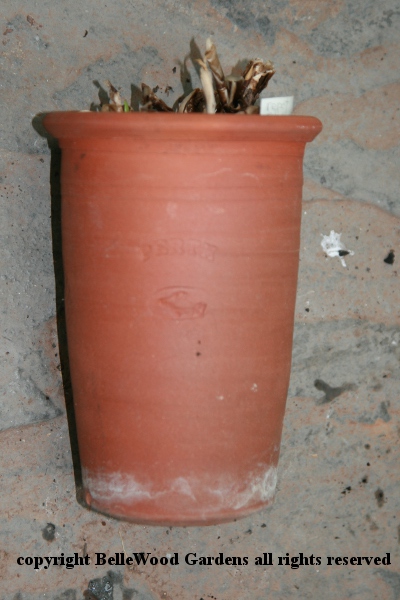
Here is a long tom with rhododphiala that were potted last year.
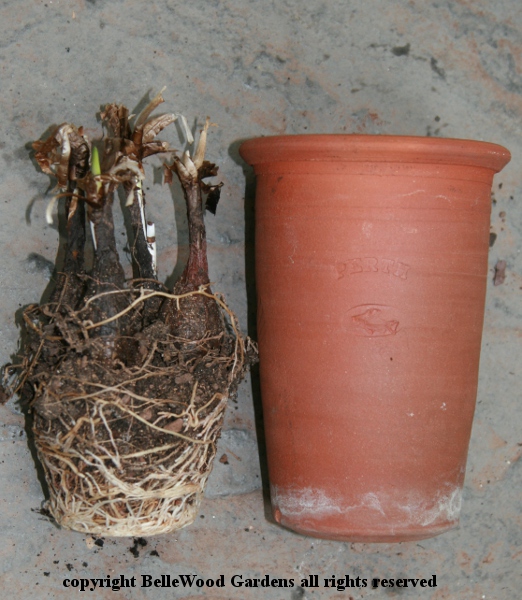
Tipped out of the pot, and you can see how they worked their way down.
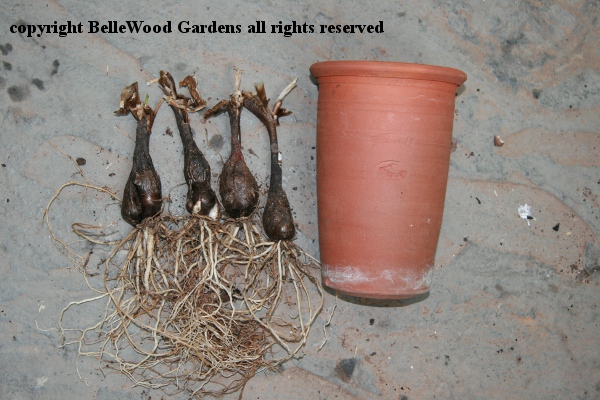
Gently separated, roots teased apart, and ready for repotting. After which
they'll go outdoors for the rain to work its magic. Maybe barometric pressure
also has a role to play, as watering from a hose doesn't seem to do it. Do what?
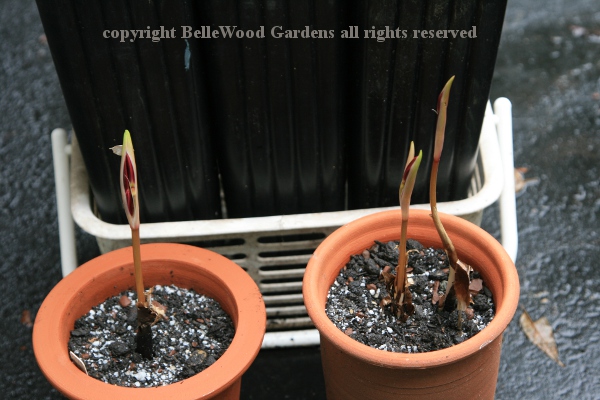
Instigate rhodophiala to hurl themselves into bloom. These were repotted
on 9 September. Here they are, just two days later, on 11 September.
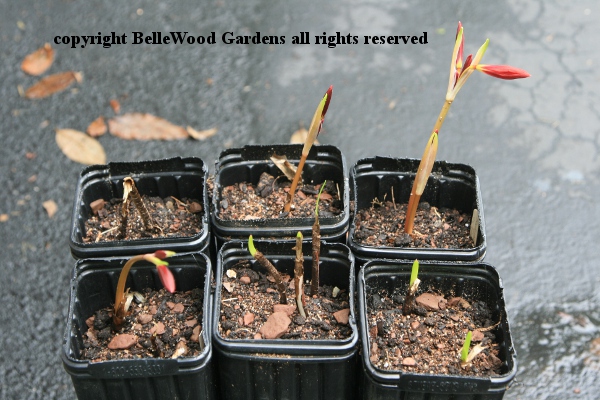
.
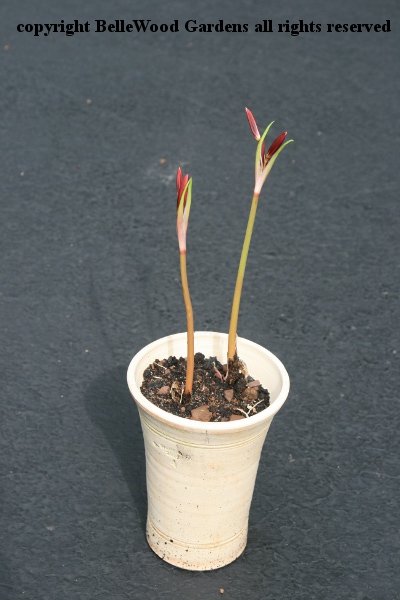
Hysteranthous. More like something magical.
UPDATE: Two days later. Friday, 14 September 2018

It always fascinates me, how rapidly rhodophiala surge into bloom.
Back to Top
Back to September 2018
Back to the main Diary Page